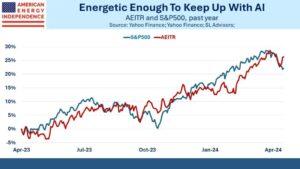Volatility can be good for your portfolio if you have a strong point of view on stocks.
That simple but profound conclusion is the essence of an important study that John Marshall, Goldman Sachs’ derivatives strategist, has just completed.
He found that using options to express strong stock views outperformed the total return of the S&P 500 index over the past 27 years. For example, selling call options with strike prices 10% higher than each of the underlying stocks in the S&P 500 generated a compound annual return of about 11% since 1996, outperforming the benchmark index by 1.4 percentage points a year.
Marshall calls his approach “asymmetric alpha,” which describes enhancing securities with puts or calls when those contracts are inflated with, respectively, fear or greed premiums. That occurs when short-term options players believe the underlying securities will experience sharp swings.
The strategy is at odds with traditional asset-allocation models that try to minimize volatility with diversification. These models don’t consider volatility as an asset that influences risk and return.
The options market has experienced astounding growth in the past 20 years, but many investors still use options for outlandish speculation, which tends to distort volatility premiums.
Institutions have increasingly launched systematic options funds to capitalize on the interest in options, and even on volatility mispricings, but they often use the same approaches over and over again, even as the world around them changes.
The opportunity exists for long-term investors to take advantage of short-term forces that determine options prices. Ultimately, long-term fundamentals determine stock prices, which allows investors to use options to express fundamental views.
Marshall’s analysis demonstrates that the potential to outperform the stock market is increased when investors use puts and calls to express their views on stocks.
“The overemphasis on short-term trading creates the potential of outperformance for long-term investors,” he told Barron’s.
Investors can profit from that dynamic with a two-pronged approach that measures macroeconomic conditions and focuses on classic stock fundamentals used to distinguish blue-chip stocks from highflying equities. Free-cash-flow yield, for instance, identifies a company’s ability to weather recessions.
To harness volatility, Marshall says investors should cover a third of their portfolio by actively selling call options on their securities—which lets them get paid for holding stock or lets them sell it at higher prices—and protect the remainder by actively hedging the S&P 500 with put-spread collars.
“Simply differentiating between which stocks to overwrite based on fundamentals improved returns by 5% annually,” he says.
Over the past 27 years, a systematic allocation to monthly index puts and calls boosted S&P 500 returns to an annualized 11.5%, outperforming the index’s 9.1% returns. But investors who used a dynamic framework to determine when they used options achieve an annual return of 18.4%.
“A fixed approach to options strategies can increase returns by 2% to 4%, but if you change while the world changes you can do much better and even double the return,” Marshall says.
Though most everyone could benefit from Marshall’s approach, individual investors are perpetually seduced by the fantasy of lottery-like payouts from trading options. Institutional investors, conversely, cling to strategies that were developed decades before listed options existed. The old ways treat volatility as something to minimize.
—
Originally Posted April 12, 2023 – You Can Beat the Market With Options—if You Use Them the Right Way
Steven M. Sears is the president and chief operating officer of Options Solutions, a specialized asset-management firm. Neither he nor the firm has a position in the options or underlying securities mentioned in this column.
Disclosure: Interactive Brokers
Information posted on IBKR Campus that is provided by third-parties does NOT constitute a recommendation that you should contract for the services of that third party. Third-party participants who contribute to IBKR Campus are independent of Interactive Brokers and Interactive Brokers does not make any representations or warranties concerning the services offered, their past or future performance, or the accuracy of the information provided by the third party. Past performance is no guarantee of future results.
This material is from Barron's and is being posted with its permission. The views expressed in this material are solely those of the author and/or Barron's and Interactive Brokers is not endorsing or recommending any investment or trading discussed in the material. This material is not and should not be construed as an offer to buy or sell any security. It should not be construed as research or investment advice or a recommendation to buy, sell or hold any security or commodity. This material does not and is not intended to take into account the particular financial conditions, investment objectives or requirements of individual customers. Before acting on this material, you should consider whether it is suitable for your particular circumstances and, as necessary, seek professional advice.
Disclosure: Options Trading
Options involve risk and are not suitable for all investors. Multiple leg strategies, including spreads, will incur multiple commission charges. For more information read the "Characteristics and Risks of Standardized Options" also known as the options disclosure document (ODD) or visit ibkr.com/occ










![[Gamma] Scalping Please [Gamma] Scalping Please](https://ibkrcampus.com/wp-content/smush-webp/2024/04/tir-featured-8-700x394.jpg.webp)
![[Gamma] Scalping Please [Gamma] Scalping Please](https://ibkrcampus.com/wp-content/uploads/2024/04/tir-featured-8-700x394.jpg)














